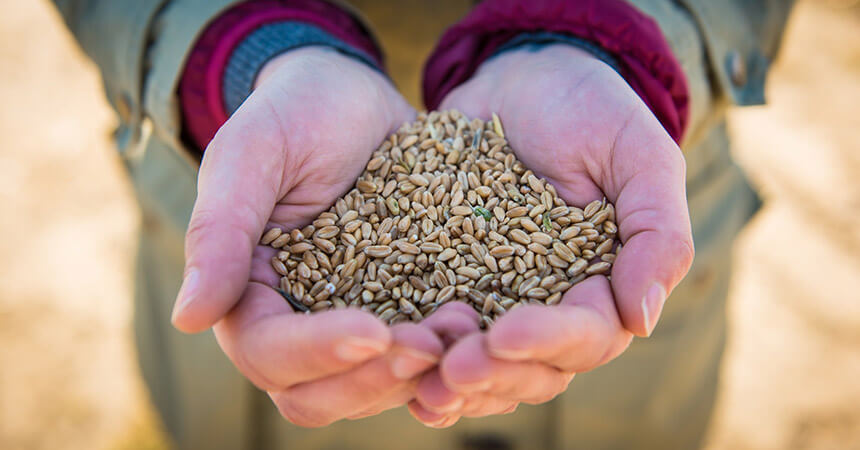Winter Wheat Breeding and Germplasm Development for Disease Resistance

Written by: Michelle Boulton
Curt McCartney joined the University of Manitoba’s Department of Plant Science in November 2020, which is when he took over this project from long-time winter wheat breeder Anita Brûlé-Babel.
He says that, while this was not a large wheat cluster project, it provided valuable support for the University of Manitoba’s winter wheat breeding program and additional disease resistance testing capacity for other winter wheat breeding programs. For example, they were testing breeding material from the Agriculture and Agri-Food Canada breeding program in Lethbridge, Alberta for leaf- and stem-rust-resistance and Fusarium head blight (FHB) resistance.
Winter wheat only accounts for about 5% of wheat production in western Canada, but McCartney would like to see an increase in winter wheat production on the prairies. Not only does winter wheat offer yields that are 15 to 25 percent higher than spring wheat, growing winter wheat supports soil conservation and gives producers options to mitigate risk associated with climate change.
“One of the major reasons why winter wheat isn’t as common as spring wheat in the prairies is that winter survival is a little less predictable. So, we’d like to improve that,” says McCartney. “The other is quality. We’re trying to improve the quality of winter wheat so that it will be closer to Canada western red spring wheat. If we can do that, the price would be equivalent to the spring wheat. And winter wheat has a yield advantage over spring wheat.”
Winter wheat is much more common in eastern Canada, where winters tend to be milder and they have a bit more snow cover, which helps the crop overwinter. McCartney is exploring some of the newer genetic information to see if he can improve the winter hardiness of winter wheat adapted for western Canada.
For example, they’re experimenting with new dwarfing genes. Most of the current wheat cultivars incorporate semi-dwarfing genes known as the “green revolution” genes. Green revolution genes are associated with a shorter coleoptile (the protective sheath covering the emerging shoot), explains McCartney. “So, you have to seed a little bit shallower to ensure they emerge properly. We’re exploring the possibility of swapping out the old dwarfing genes with new ones that don’t have an effect on coleoptile length.”
Another shortcoming of the green revolution genes is that the dwarfing phenotype is associated with increased FHB susceptibility, but McCartney says genetic control for FHB resistance is more complicated than for other diseases. “More genes are involved, and testing for resistance is not as easy. Both of those factors make it difficult to improve that trait,” he concedes.
Fortunately, Manitoba is an ideal place for an FHB nursery. “It works quite well in Manitoba, because our general growing conditions are quite conducive to the disease and farmers in the area get a lot of FHB.”
The third objective of the program was to provide undergraduate student training in field, greenhouse, and laboratory techniques. “Students are involved with operating the disease nurseries, seeing how our yield trials are conducted, collecting data, and getting a broad overview of how these types of experiments are conducted,” explains McCartney.
He says the summer student opportunities are an important way to generate interest in this kind of research. “This is how we can identify or spark interest in graduate studies and identify people who would be interested in becoming future plant breeders or people working in other aspects of crop research. That’s how I got into this—I was a summer student with Anita Brûlé-Babel, who was the previous breeder in this program. It was quite a while ago, obviously, but that changed the direction of my education and ultimately my career.”
This Wheat Cluster project received funding from the Alberta Wheat Commission and the Western Grains Research Foundation.